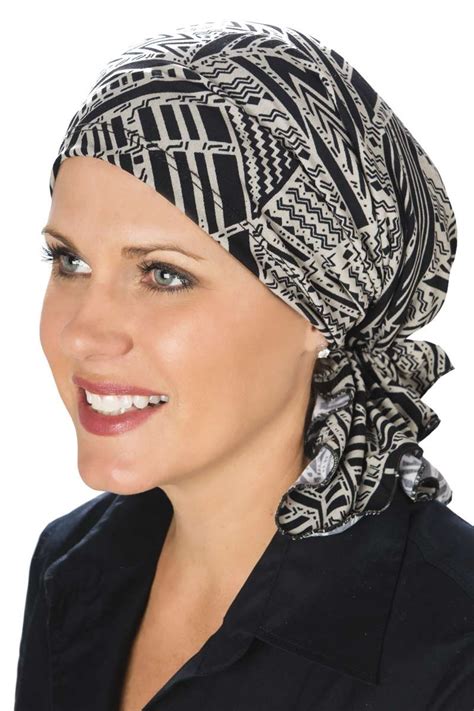The Silent Battle Against Hair Loss
Cancer treatments, such as chemotherapy and radiation therapy, often come with the devastating side effect of hair loss. This can be an emotionally distressing experience for patients, affecting their self-image and overall well-being.

According to the American Cancer Society, up to 65% of people receiving chemotherapy experience complete hair loss. Losing one’s hair can lead to a sense of vulnerability, isolation, and anxiety.
Head Covers: A Haven of Support
Head covers offer a practical and stylish solution to the challenges posed by hair loss. They provide comfort, warmth, and a sense of normalcy, empowering patients to navigate their cancer journey with dignity and confidence.
Benefits Beyond Aesthetics
In addition to their cosmetic benefits, head covers also offer a range of functional advantages:
- Comfort: Soft and breathable materials provide insulation and reduce scalp irritation.
- Warmth: Head covers trap body heat, keeping patients warm during and after treatment.
- Protection: They shield the scalp from harsh elements such as sunlight, wind, and cold.
- Reduced Anxiety: By concealing hair loss, head covers can alleviate self-consciousness and anxiety.
Types of Head Covers
The wide range of head covers available allows patients to choose options that suit their individual needs and preferences.
Scarves: Versatile and stylish, scarves can be draped in various ways to cover the head and create different looks.
Hats: From beanies to baseball caps, hats offer a comfortable and casual option for covering hair loss.
Turbans: Elegant and comfortable, turbans provide full coverage and can be adorned with embellishments to add a touch of flair.
Bandanas: Affordable and practical, bandanas can be tied around the head or neck for quick and easy coverage.
Wigs: For those seeking a more realistic alternative, wigs can provide the illusion of a full head of hair.
Choosing the Right Head Cover
Selecting the ideal head cover involves considering factors such as:
- Comfort: Choose materials that feel soft and gentle on the skin.
- Style: Opt for covers that complement your facial features and personal taste.
- Coverage: Determine the level of coverage you desire (full, partial, or just scalp protection).
- Practicality: Consider ease of use, cleaning, and storage.
Common Mistakes to Avoid
To ensure maximum comfort and effectiveness, avoid these common pitfalls:
- Overheating: Choose breathable fabrics that allow airflow to prevent sweating.
- Synthetic Materials: Opt for natural fibers like cotton or bamboo to minimize scalp irritation.
- Tight Fitting: Avoid head covers that constrict the scalp, causing discomfort and headaches.
- Neglecting Cleaning: Regularly wash head covers to maintain hygiene and prevent infections.
- Inappropriate Wear: Respect cultural and religious sensitivities when selecting and wearing head covers.
Empowering Patients, One Cover at a Time
Head covers are not just accessories; they are tangible symbols of strength, resilience, and hope for cancer patients. By providing comfort, warmth, and confidence, they empower patients to embrace their journey with dignity and determination.
Table 1: Benefits of Head Covers for Cancer Patients
| Benefit | Explanation |
|---|---|
| Comfort | Soft and breathable materials provide insulation and reduce scalp irritation. |
| Warmth | Head covers trap body heat, keeping patients warm during and after treatment. |
| Protection | They shield the scalp from harsh elements such as sunlight, wind, and cold. |
| Reduced Anxiety | By concealing hair loss, head covers can alleviate self-consciousness and anxiety. |
Table 2: Types of Head Covers
| Type | Description |
|---|---|
| Scarves | Versatile and stylish, scarves can be draped in various ways to cover the head and create different looks. |
| Hats | From beanies to baseball caps, hats offer a comfortable and casual option for covering hair loss. |
| Turbans | Elegant and comfortable, turbans provide full coverage and can be adorned with embellishments to add a touch of flair. |
| Bandanas | Affordable and practical, bandanas can be tied around the head or neck for quick and easy coverage. |
| Wigs | For those seeking a more realistic alternative, wigs can provide the illusion of a full head of hair. |
Table 3: Factors to Consider When Choosing a Head Cover
| Factor | Explanation |
|---|---|
| Comfort | Choose materials that feel soft and gentle on the skin. |
| Style | Opt for covers that complement your facial features and personal taste. |
| Coverage | Determine the level of coverage you desire (full, partial, or just scalp protection). |
| Practicality | Consider ease of use, cleaning, and storage. |
Table 4: Common Mistakes to Avoid When Wearing Head Covers
| Mistake | Explanation |
|---|---|
| Overheating | Choose breathable fabrics that allow airflow to prevent sweating. |
| Synthetic Materials | Opt for natural fibers like cotton or bamboo to minimize scalp irritation. |
| Tight Fitting | Avoid head covers that constrict the scalp, causing discomfort and headaches. |
| Neglecting Cleaning | Regularly wash head covers to maintain hygiene and prevent infections. |
| Inappropriate Wear | Respect cultural and religious sensitivities when selecting and wearing head covers. |
Conclusion
Head covers play a vital role in enhancing the comfort, confidence, and well-being of cancer patients. By providing practical protection, mitigating physical and emotional discomfort, and fostering a sense of self-worth, they empower patients to face their journey with strength and resilience. As medical practitioners, caregivers, and loved ones, we must recognize and champion the invaluable role head covers play in improving the lives of cancer patients. Together, we can create a more supportive and compassionate environment for those navigating this challenging path.
